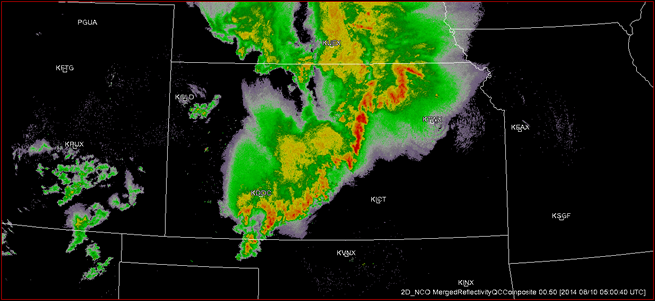Legacy Composite Reflectivity - Warning Decision Training Division (WDTD)
Navigation Links
Products Guide
Legacy Composite Reflectivity
Short Description
The maximum reflectivity in a vertical column using all available WSR-88D radars at a horizontal grid point.
Subproducts
None
Primary Users
None. Everyone should use the Composite Reflectivity product derived from the 3D Reflectivity Cube instead.
Input Sources
Single-site WSR-88D radars
Resolution
Spatial Resolution: 0.01o Latitude (~1.11 km) x 0.01o Longitude (~1.01 km at 25oN and 0.73 km at 49oN)
Temporal Resolution: 2 minutes
Product Creation
At each horizontal 2D grid point, the maximum reflectivity value from all available radars at that grid point is retained.
Technical Details
Latest Update: MRMS Version 10
References
None




